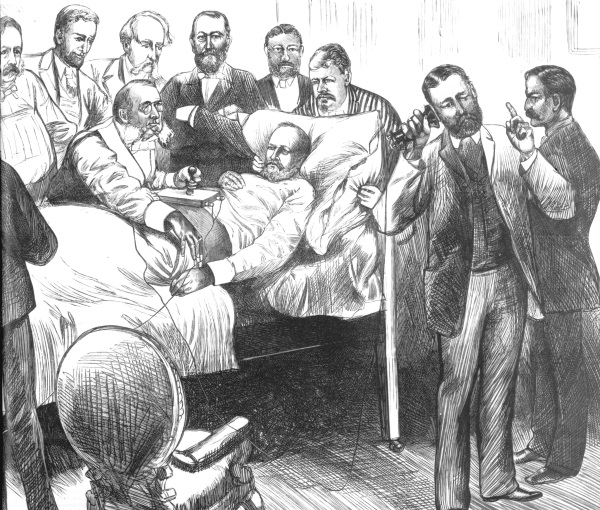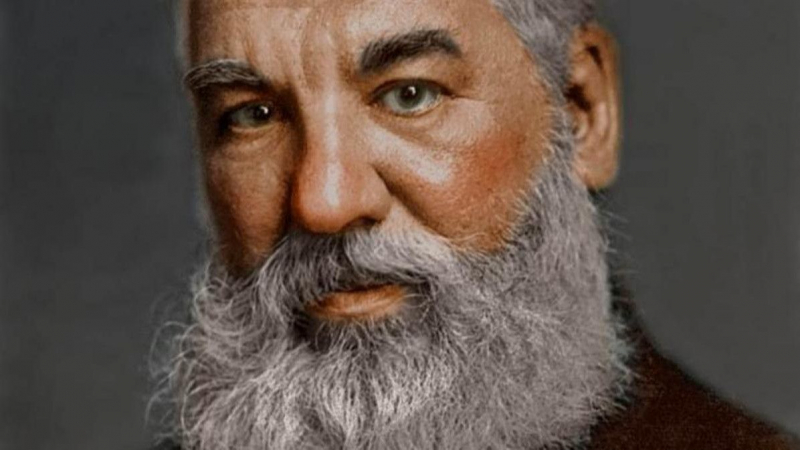Bell helped to invent a metal-detecting device to find bullets in gunshot victims
After serving as president for about four months, James Garfield was assassinated on July 2, 1881, by Charles J. Guiteau in a railroad station in Washington, D.C. The president was struck in the back by one of Guiteau's bullets, but doctors were unable to find it. The president would live for 78 days before succumbing, but not before doctors made several attempts to physically probe the president's body and remove the bullet. Simon Newcomb, a mathematics professor at the U.S. Naval Observatory in Washington, D.C., was aware that metal placed close to electrically charged coils emits a faint hum. He believed that a device he developed using these ideas could assist in locating the bullet that was lodged in the president. When a journalist asked Newcomb about his metal-detecting tool, Newcomb said that it needed improvement.
Bell contacted Newcomb after reading the article in the newspaper and offered to help. Newcomb and Bell collaborated to make some changes to Newcomb's invention, including the addition of Bell's phone to amplify the hum. Bell started looking for Garfield's bullet at the end of July, but in vain. Despite Garfield's passing in September, Bell went on to successfully demonstrate the tool, which was later adopted by surgeons and used to save the lives of wounded soldiers in both the Boer War (1899–1902) and World War I (1914–18).










